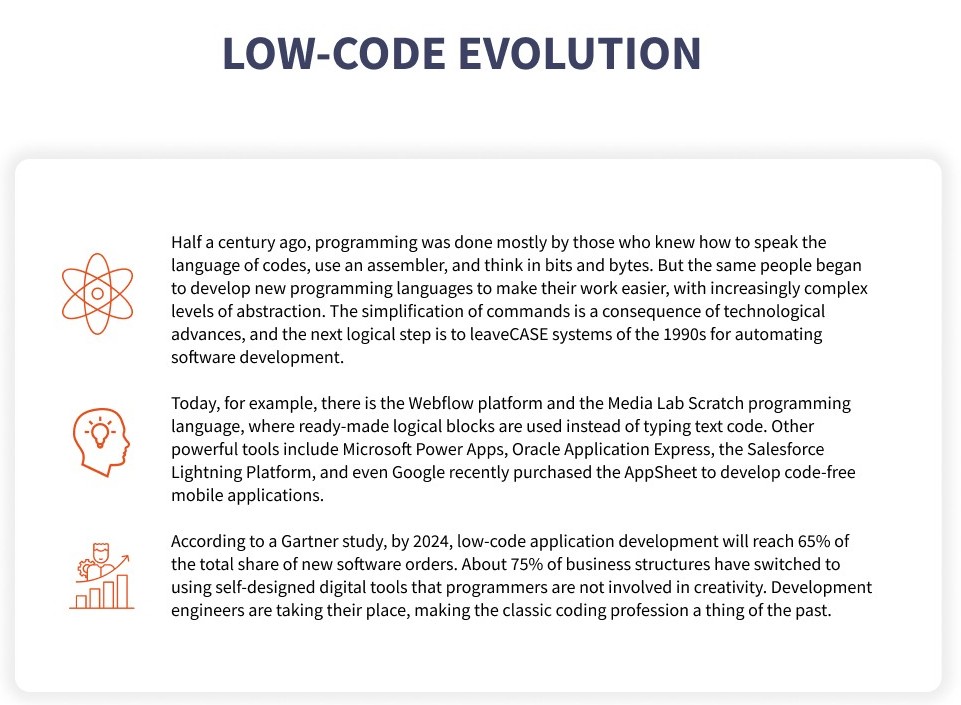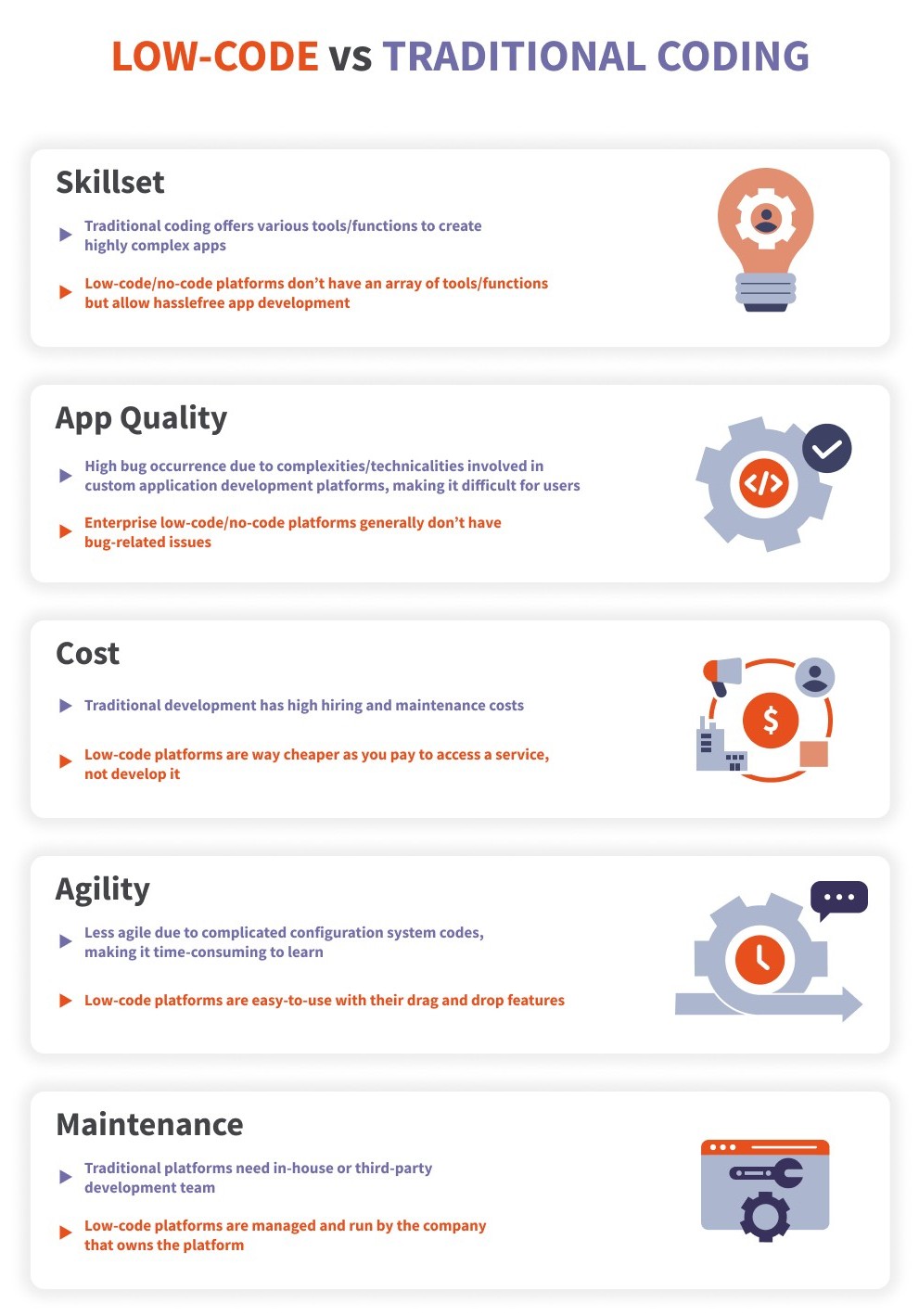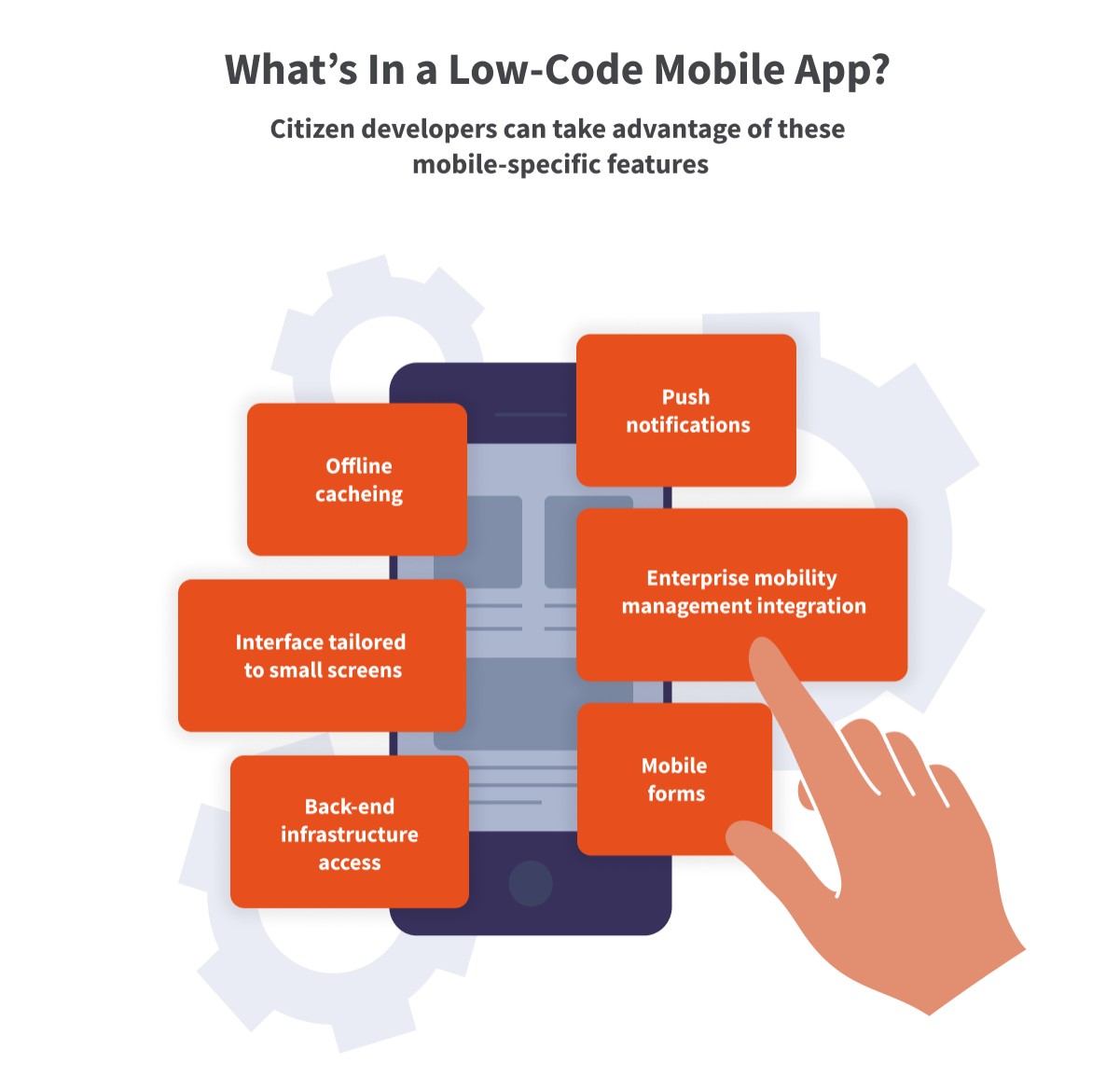Can low-code be the future of software development?
Companies need more and more software and software development professionals to keep up with the efficiencies dictated by the digitalization of the market.
The huge demand has already brought new technological solutions that could further revolutionize the software industry making virtually anyone a potential software developer. In response to demand, the market has come up with its own solution: the vertical resolution of the software development process.
The vertical slices should be small – anywhere from a couple days to complete to the duration of a sprint. The work completed doesn’t necessarily have to be an entire feature, and usually isn’t. Once the work is completed, it’s immediately ready for integration and testing, and the teams can move onto the next challenge. This approach brings a wealth of benefits to software development projects,
In the low-code model, all important functions of applications – such as operating system communication, database and user management, the UI model, and others – are built on a productized platform. But how long can this methodology survive the continuous changing of technology?
Forrester calls low-code “products and / or cloud services” a tool for application development that requires visual, declarative application. And Gartner describes it as a platform that “provides rapid application development (RAD) capabilities for development, deployment, and execution – in the cloud”.
In essence, all these tools make application development simple.
With drag and drop function and intuitive process flow, and with visual guidance anyone can build applications regardless of technical ability. This empowers many people beyond the walls of IT to take responsibility, streamline common development tasks, increase productivity, and ultimately free up development resources.
More evident – bigger share in the market
the classic coding profession may become a thing of the past

Low-code vs traditional coding on the Gramener’s graphic below:

It is all about visuals
Companies try to visualize as many processes as possible. Their goal is to make analyses transparent in an extremely short time. People like to think in pictures and get the information to their brains through diagrams and graphs. It is no coincidence that articles and studies with infographics are much more popular than useful dissertations that are merely a dry listing of facts.

Visual content also plays a key role in the analytics functions in business software development. This, of course, means UX / UI development by the business intelligence developer for the development as a whole, so that such a product can be created that users are happy to use on a daily basis. In addition, the use of charts and visual elements has become much more prominent in data analysis.
Can programming training become unnecessary in the future?
As the digital business continues to be dynamic and business teams become increasingly committed to the solution delivery process, companies will shift in technologies and disciplines to meet the different needs of users. Organizations should plan to adapt the key technologies and practices and the development of people and skills.

So the answer for the question above: hardly and yes - it depends on what skills will be needed to develop applications in the future. By enterprise-level adaptation of low-code application platforms (LCAPs), organizations can build applications faster with fewer professional developers. As companies’ desire to employ skilled professionals in the digital economy is growing so fast that programming training cannot keep up, LCAPs are getting more attention. To meet these needs, IT organizations need to be able to quickly develop, orchestrate, and iterate processes and applications. And low-code is how that is being done.
2021-09-09
Can low-code be the future of software development?
3 min
Services and products we used
Share

